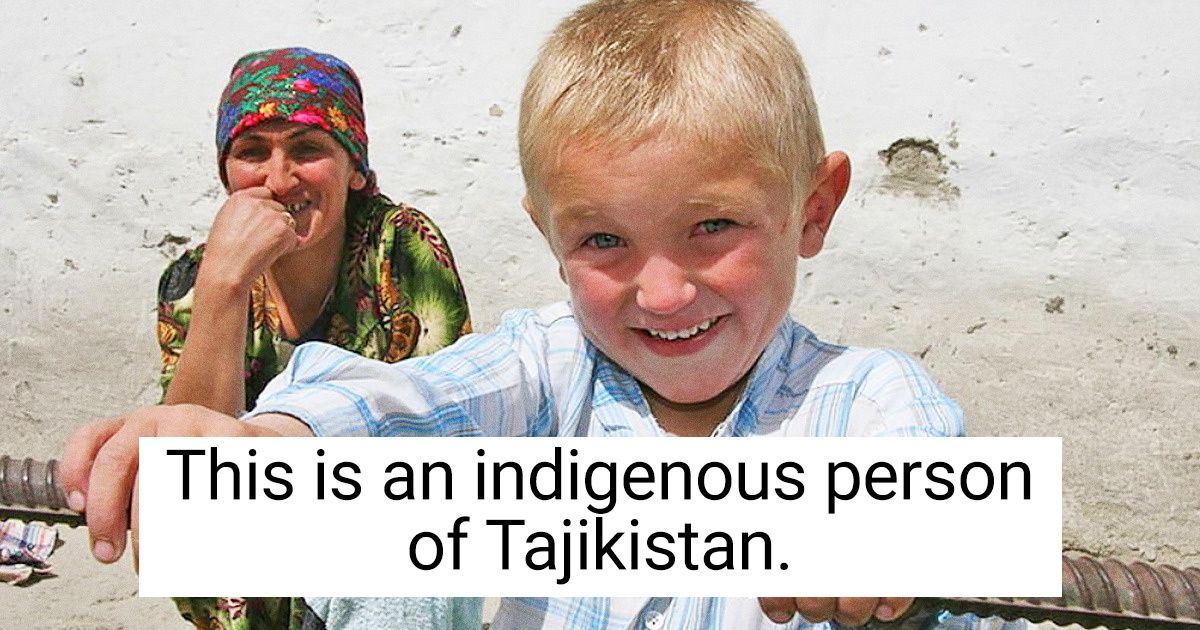15 Moments That Show Kindness Is Our Greatest Power—Not Our Weakness


Hyperboreans and the inhabitants of Atlantis are just some of the mythical nations that fascinated the ancient civilizations that came before us. However, reality is always better than fiction, and the nations that actually exist still give researchers questions that they have no answers for. For example, how is it possible that just 400 miles away from Moscow, there are pagans that still make sacrifices to the ancient gods?
We at Bright Side found information about 10 of the most mysterious nations in the world and can’t wait to share what we learned with you.
This is an itinerant group in Central and Western Europe and they’re sometimes called “gypsies,” a name often applied to the Roma or Romani people, which is incorrect. The Yenish people really do live a bit like the Roma: they travel all the time, and they mostly sell goods and play music. But genetically, they’re European, not Indo-Aryan like Romani people are.
Scientists still don’t understand why Europeans started to live like gypsies. There’s one theory that says it happened at the end of the eighteenth century. It’s likely that the Yenish people are the descendants of marginalized groups of people (mostly those who spoke German). But they say that they’re the descendants of the ancient Celtic tribe, Helvetii, that settled in the mountains of Switzerland and fought against the Roman Empire.
The Basques have been named the most mysterious people in Europe and scientists still don’t know much about their origins. Some researchers believe that the language of the Basques is connected to the languages of the Caucasus people but most scientists disagree with this.
This ethnic group is intriguing because of its people’s appearance. Among individuals with dark skin and hair, many Kalash people have light skin and hair. There’s a legend that they are the descendants of Alexander the Great and his soldiers.
Some modern researchers believe that the Kalash people are related to ancient Aryans. However, various studies deny any shared heritage with Europeans.
What’s really surprising about these people is their unique religion. Despite having lived among Muslims for many centuries, they still remain pagans.
Tuareg people are the most incredible ethnic group in North Africa. Their men have to conceal their faces and women have more freedom than their Arab counterparts. And, by the way, most of their women have been taught to read and write because they’re responsible for upholding traditions, and many of their men are illiterate. In fact, they live in a matriarchy even though most of them are Sunni Islam.
The Nivkh people and the Basques have something in common: a unique language that has nothing in common with any others. They also live in Russia, in the lower reaches of the Amur River and on the Sakhalin island. In 2010, there were 4,652 of them there.
The Dogon people shocked ethnologists with their knowledge about space. They live in Africa, in the Central Plateau region. In the 1930s, French researcher Marcel Griaule discovered that the Dogons knew a lot about astronomy — like the Sirius star, the satellites of Jupiter, and the rings of Saturn.
However, ethnologists that visited the Dogons later found that Griaule was probably wrong and what he thought was Sirius was actually the name given to anything, like another star or the planet Venus, for example.
Mari pagan priests known as Kart (at the end of the nineteenth century and the beginning of the twentieth century)
The Mari people are called the “last pagans” of Europe. This small Finno-Ugric group mostly lives in the Ural and Volga regions, and most of them are orthodox but there are some that have a traditional religion. They believe in many gods, pray in forests, and even make sacrifices. Scientists still don’t understand why the people living in the very center of Russia didn’t choose a more prominent religion. After all, they were in constant contact with Christians and Muslims.
The Mari religion is based on faith in the powers of nature that people should respect. Kugu Jumo is the main god they worship. Keremet is its opposite, the evil spirit.
The Mari people have a special wedding talisman — a whip. The person overseeing the wedding traditions waves the whip around their head, scaring away evil spirits.
These are the people living in the Western Pamirs that are divided by the borders of Tajikistan, Afghanistan, Pakistan, and China. The Pamir people have been noted to have had light skin, and sometimes blue eyes and light hair. These people are of the Pamir-Fergana race, the most eastern subrace of the now obsolete Europid race.
This is one of the most mysterious ethnic groups of Northern Europe and it’s at least 7,000 years old. This makes the Sámi people one of the oldest ethnic groups in the world. Their long-term isolation allowed them to change very little over a long period of time.
The Sámi people think there are 5 seasons, not 4: winter, spring, summer, fall, and Kaamos — the time from the middle of December to the end of January.
In the years 895 and 896, under the leadership of Árpád, some Hungarians crossed the Carpathians and entered the Carpathian Basin. They settled in Transylvania and then entered Pannonia, becoming a prominent minority group in Austria.
What ethnic group seems to be the most mysterious to you?











